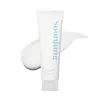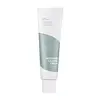What's inside
What's inside
 Key Ingredients
Key Ingredients

 Benefits
Benefits

 Concerns
Concerns

No concerns
 Ingredients Side-by-side
Ingredients Side-by-side

Water
Skin ConditioningGlycerin
HumectantPropanediol
SolventPentaerythrityl Tetraethylhexanoate
Emollient1,2-Hexanediol
Skin ConditioningSqualane
EmollientPanthenol
Skin ConditioningCetearyl Alcohol
EmollientBis-Diglyceryl Polyacyladipate-2
EmollientGlyceryl Stearate
EmollientPolyglyceryl-3 Methylglucose Distearate
EmulsifyingAmmonium Acryloyldimethyltaurate/Vp Copolymer
Hydrogenated Lecithin
EmulsifyingAcrylates/C10-30 Alkyl Acrylate Crosspolymer
Emulsion StabilisingXanthan Gum
EmulsifyingGlyceryl Caprylate
EmollientHydroxypropyl Starch Phosphate
Disodium EDTA
Ethylhexylglycerin
Skin ConditioningMadecassoside
AntioxidantTromethamine
BufferingButylene Glycol
HumectantTocopherol
AntioxidantCamellia Sinensis Leaf Extract
AntimicrobialWater, Glycerin, Propanediol, Pentaerythrityl Tetraethylhexanoate, 1,2-Hexanediol, Squalane, Panthenol, Cetearyl Alcohol, Bis-Diglyceryl Polyacyladipate-2, Glyceryl Stearate, Polyglyceryl-3 Methylglucose Distearate, Ammonium Acryloyldimethyltaurate/Vp Copolymer, Hydrogenated Lecithin, Acrylates/C10-30 Alkyl Acrylate Crosspolymer, Xanthan Gum, Glyceryl Caprylate, Hydroxypropyl Starch Phosphate, Disodium EDTA, Ethylhexylglycerin, Madecassoside, Tromethamine, Butylene Glycol, Tocopherol, Camellia Sinensis Leaf Extract
Water
Skin ConditioningArtemisia Princeps Extract
Skin ConditioningGlycerin
HumectantEthylhexyl Isononanoate
EmollientDipropylene Glycol
HumectantGlycyrrhiza Glabra Root Extract
BleachingPanthenol
Skin ConditioningArachidyl Alcohol
EmollientBehenyl Alcohol
EmollientArachidyl Glucoside
EmulsifyingGlucose
HumectantCetearyl Olivate
Sorbitan Olivate
EmulsifyingDipotassium Glycyrrhizate
HumectantAllantoin
Skin ConditioningTheobroma Cacao Seed Extract
AntioxidantCarbomer
Emulsion StabilisingXanthan Gum
EmulsifyingAmmonium Acryloyldimethyltaurate/Vp Copolymer
Disodium EDTA
Caprylyl Methicone
Skin ConditioningEthylhexylglycerin
Skin ConditioningTromethamine
BufferingGlycereth-26
HumectantBeta-Glucan
Skin Conditioning1,2-Hexanediol
Skin ConditioningCeramide AP
Skin ConditioningButylene Glycol
HumectantCaprylic/Capric Triglyceride
MaskingWater, Artemisia Princeps Extract, Glycerin, Ethylhexyl Isononanoate, Dipropylene Glycol, Glycyrrhiza Glabra Root Extract, Panthenol, Arachidyl Alcohol, Behenyl Alcohol, Arachidyl Glucoside, Glucose, Cetearyl Olivate, Sorbitan Olivate, Dipotassium Glycyrrhizate, Allantoin, Theobroma Cacao Seed Extract, Carbomer, Xanthan Gum, Ammonium Acryloyldimethyltaurate/Vp Copolymer, Disodium EDTA, Caprylyl Methicone, Ethylhexylglycerin, Tromethamine, Glycereth-26, Beta-Glucan, 1,2-Hexanediol, Ceramide AP, Butylene Glycol, Caprylic/Capric Triglyceride
 Reviews
Reviews

Ingredients Explained
These ingredients are found in both products.
Ingredients higher up in an ingredient list are typically present in a larger amount.
1,2-Hexanediol is a synthetic liquid and another multi-functional powerhouse.
It is a:
- Humectant, drawing moisture into the skin
- Emollient, helping to soften skin
- Solvent, dispersing and stabilizing formulas
- Preservative booster, enhancing the antimicrobial activity of other preservatives
Ammonium Acryloyldimethyltaurate/Vp Copolymer (let's call it AAVC for short) is a synthetically created polymer. It's used as a film-forming agent and used to thicken the consistency of products.
AAVC is able to increase the consistency and viscosity of products due to its large molecule size. It also prevents ingredients from separating.
Butylene Glycol (or BG) is used within cosmetic products for a few different reasons:
Overall, Butylene Glycol is a safe and well-rounded ingredient that works well with other ingredients.
Though this ingredient works well with most skin types, some people with sensitive skin may experience a reaction such as allergic rashes, closed comedones, or itchiness.
Learn more about Butylene GlycolDisodium EDTA plays a role in making products more stable by aiding other preservatives.
It is a chelating agent, meaning it neutralizes metal ions that may be found in a product.
Disodium EDTA is a salt of edetic acid and is found to be safe in cosmetic ingredients.
Learn more about Disodium EDTAEthylhexylglycerin (we can't pronounce this either) is commonly used as a preservative and skin softener. It is derived from glyceryl.
You might see Ethylhexylglycerin often paired with other preservatives such as phenoxyethanol. Ethylhexylglycerin has been found to increase the effectiveness of these other preservatives.
Glycerin is already naturally found in your skin. It helps moisturize and protect your skin.
A study from 2016 found glycerin to be more effective as a humectant than AHAs and hyaluronic acid.
As a humectant, it helps the skin stay hydrated by pulling moisture to your skin. The low molecular weight of glycerin allows it to pull moisture into the deeper layers of your skin.
Hydrated skin improves your skin barrier; Your skin barrier helps protect against irritants and bacteria.
Glycerin has also been found to have antimicrobial and antiviral properties. Due to these properties, glycerin is often used in wound and burn treatments.
In cosmetics, glycerin is usually derived from plants such as soybean or palm. However, it can also be sourced from animals, such as tallow or animal fat.
This ingredient is organic, colorless, odorless, and non-toxic.
Glycerin is the name for this ingredient in American English. British English uses Glycerol/Glycerine.
Learn more about GlycerinPanthenol is a common ingredient that helps hydrate and soothe the skin. It is found naturally in our skin and hair.
There are two forms of panthenol: D and L.
D-panthenol is also known as dexpanthenol. Most cosmetics use dexpanthenol or a mixture of D and L-panthenol.
Panthenol is famous due to its ability to go deeper into the skin's layers. Using this ingredient has numerous pros (and no cons):
Like hyaluronic acid, panthenol is a humectant. Humectants are able to bind and hold large amounts of water to keep skin hydrated.
This ingredient works well for wound healing. It works by increasing tissue in the wound and helps close open wounds.
Once oxidized, panthenol converts to pantothenic acid. Panthothenic acid is found in all living cells.
This ingredient is also referred to as pro-vitamin B5.
Learn more about PanthenolTromethamine helps balance the pH and improve the texture of a product. It is synthetically created.
As an emulsifier, Tromethamine prevents oil and water ingredients from separating. This helps stabilize the product and elongate a product's shelf life. Tromethamine also makes a product thicker.
Tromethamine helps balance the pH level of a product. Normal pH level of skin is slightly acidic (~4.75-5.5). The acidity of our skin is maintained by our glands and skin biome. Being slightly acidic allows our skin to create an "acid mantle". This acid mantle is a thin barrier that protects our skin from bacteria and contaminants.
Oral Tromethanmine is an anti-inflammatory drug but plays the role of masking, adding fragrance, and/or balancing pH in skincare.
1,3-Propanediol, 2-amino-2-(hydroxymethyl)-
Learn more about TromethamineWater. It's the most common cosmetic ingredient of all. You'll usually see it at the top of ingredient lists, meaning that it makes up the largest part of the product.
So why is it so popular? Water most often acts as a solvent - this means that it helps dissolve other ingredients into the formulation.
You'll also recognize water as that liquid we all need to stay alive. If you see this, drink a glass of water. Stay hydrated!
Learn more about WaterXanthan gum is used as a stabilizer and thickener within cosmetic products. It helps give products a sticky, thick feeling - preventing them from being too runny.
On the technical side of things, xanthan gum is a polysaccharide - a combination consisting of multiple sugar molecules bonded together.
Xanthan gum is a pretty common and great ingredient. It is a natural, non-toxic, non-irritating ingredient that is also commonly used in food products.
Learn more about Xanthan Gum